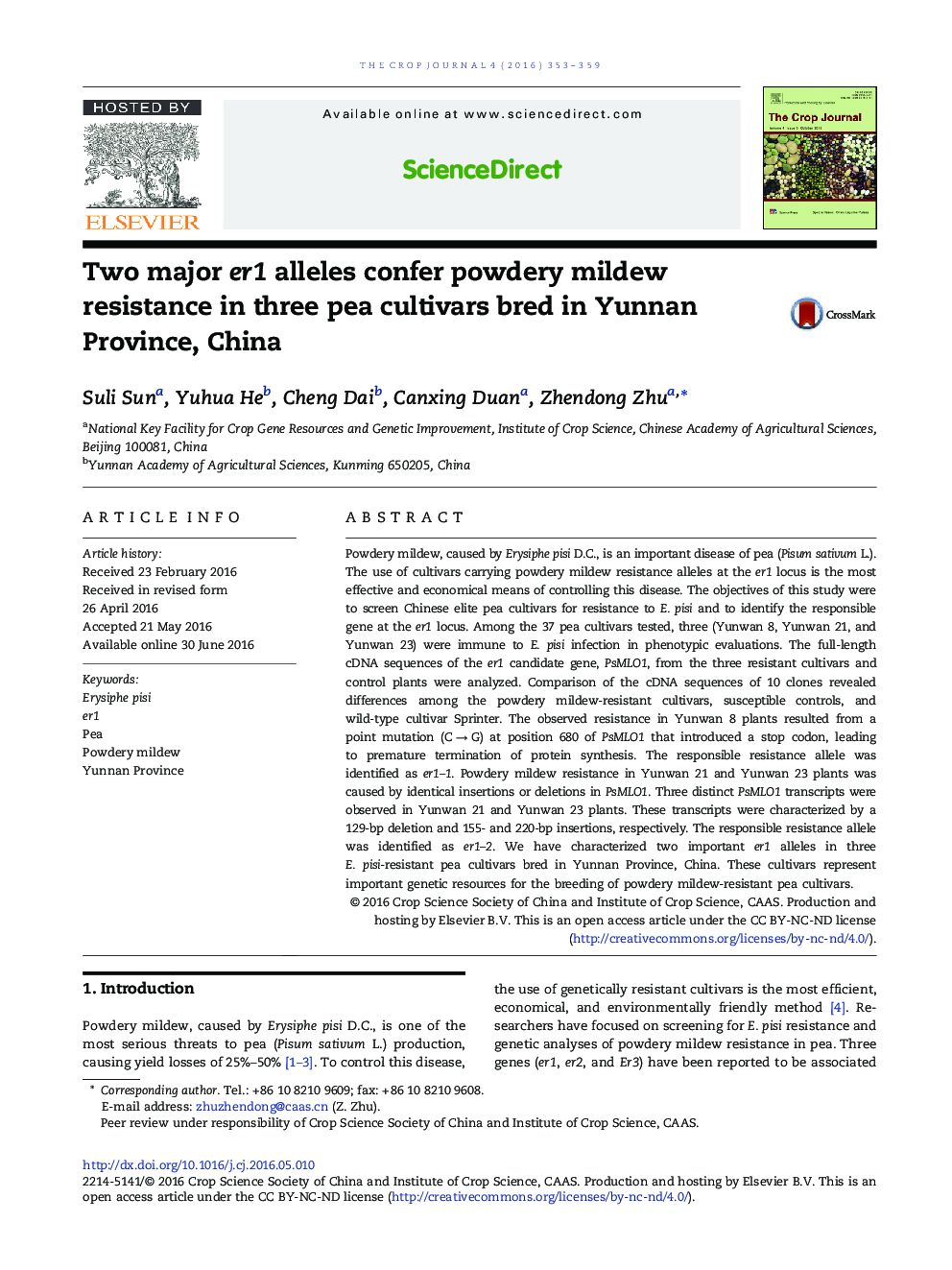| Article ID | Journal | Published Year | Pages | File Type |
|---|---|---|---|---|
| 5520798 | The Crop Journal | 2016 | 7 Pages |
Powdery mildew, caused by Erysiphe pisi D.C., is an important disease of pea (Pisum sativum L.). The use of cultivars carrying powdery mildew resistance alleles at the er1 locus is the most effective and economical means of controlling this disease. The objectives of this study were to screen Chinese elite pea cultivars for resistance to E. pisi and to identify the responsible gene at the er1 locus. Among the 37 pea cultivars tested, three (Yunwan 8, Yunwan 21, and Yunwan 23) were immune to E. pisi infection in phenotypic evaluations. The full-length cDNA sequences of the er1 candidate gene, PsMLO1, from the three resistant cultivars and control plants were analyzed. Comparison of the cDNA sequences of 10 clones revealed differences among the powdery mildew-resistant cultivars, susceptible controls, and wild-type cultivar Sprinter. The observed resistance in Yunwan 8 plants resulted from a point mutation (C â G) at position 680 of PsMLO1 that introduced a stop codon, leading to premature termination of protein synthesis. The responsible resistance allele was identified as er1-1. Powdery mildew resistance in Yunwan 21 and Yunwan 23 plants was caused by identical insertions or deletions in PsMLO1. Three distinct PsMLO1 transcripts were observed in Yunwan 21 and Yunwan 23 plants. These transcripts were characterized by a 129-bp deletion and 155- and 220-bp insertions, respectively. The responsible resistance allele was identified as er1-2. We have characterized two important er1 alleles in three E. pisi-resistant pea cultivars bred in Yunnan Province, China. These cultivars represent important genetic resources for the breeding of powdery mildew-resistant pea cultivars.
